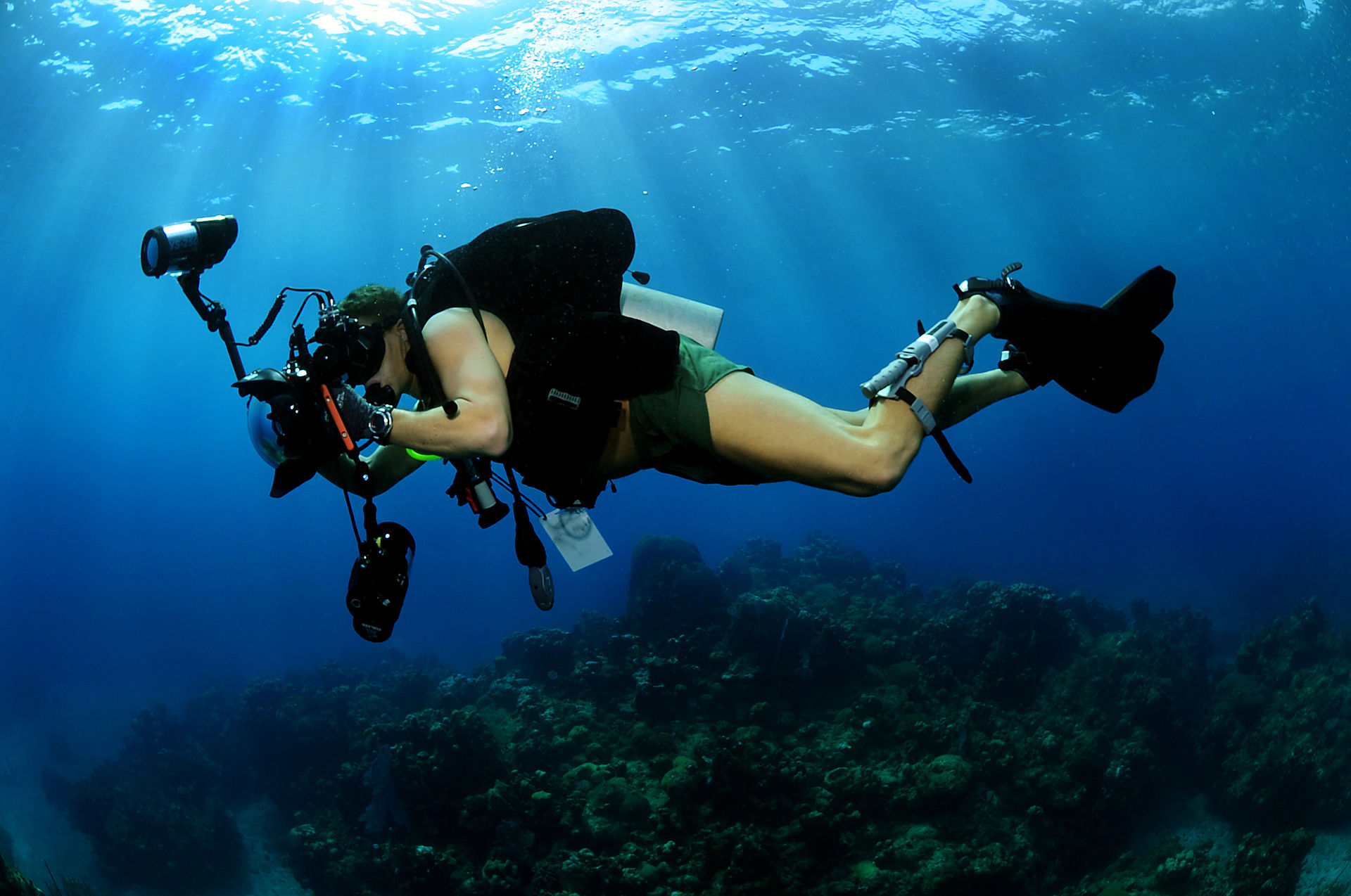
What's right for you? That might seem like a silly question, but it is not always obvious to people what factors are involved in determining how much lighting they need. There are a few things that determine the amount of color saturation and image clarity in underwater photography: depth, ambient light, and water clarity. Obviously you're not in control of the depth that your subject is at, or the water clarity, but you do have some say in the amount of light. By adding to the available natural light, you’ll be able to improve the color saturation, sharpness and clarity of your photos.
Underwater Depth and Color
Think about rainbows; they are a vision of light refracted into individual colors through rain (drops of water). So, it’s only natural that when we’re under water, colors change based on the light from above being refracted and absorbed by the water. Each color is a different wave length and energy level, which means that each color absorbs at a different rate.
Colors vanish underwater in the same order as they appear in the color spectrum.
- Red – The first to disappear, you may see a noticeable difference in red at 5ft and a complete loss at 15ft.
- Orange – The next to go, oranges will be lost at between 25 and 30ft.
- Yellow – Next are yellows, which fade at 35 to 40ft
- Green – The last to go are greens at anywhere between 50 and 75ft.
Keep in mind the impact of horizontal distance as well. If you are 10 feet underwater, and you are viewing an object that is 10 feet away, you are viewing the light that has reflected off of that object, which has actually travelled 20 feet to reach your eye. At that point, all of the reds will have been filtered out.
Similarly, the light from your system will have to travel 10 feet to the subject you’re shooting and reflect 10 feet back to the camera lens, for a total of 20 feet. Keep this in mind when setting up your shots. The closer you get, the better the color.
Mind Games
The interesting thing is that our brains are wired to compensate for the loss of color. We see a familiar object under water and we see red, because we know it is red, but when we take a photo of it with only natural light, there is no red. So, you actually need lighting when you don’t necessarily think you do.
Where do I start?
To choose the right underwater lighting system, you will have to think about a number of things: What kind of photography will I primarily be shooting, stills or video? What subjects will I be shooting? What will the available light be like where I dive? What kind of camera, housing and lenses will I be using? Why am I taking photos and what do I plan to do with them?
Once you have answers to these questions, you’ll be well on your way to picking out the right components you need in order to put together a lighting system that will take your photos to a whole new level!


Load more comments